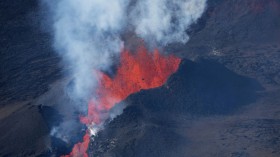After the five previous mass extinctions faced by planet earth, the sixth may happen by 2020 according to the projections made by WWF and the Zoological Society of London. Given the current rate of biodiversity loss, including climate change, what we are facing is a problematic future with no assurance of our system's stability which is one of the milestones caused by this era on man: the Anthropocene.
“For the first time since the demise of the dinosaurs 65 million years ago, we face a global mass extinction of wildlife. We ignore the decline of other species at our peril -- for they are the barometer that reveals our impact on the world that sustains us. Humanity’s misuse of natural resources is threatening habitats, pushing irreplaceable species to the brink and threatening the stability of our climate," said WWF Science and Policy director Dr. Mike Barrett in a news article.
He is pointing out the dilemma that the future may bring because of the human impact to the environment. Based on their findings of the analysis of 3,706 species, which is noted as the most comprehensive work yet, we have already lost 58 percent of animal population from 1970 to 2012.
Using the same rate, it could be foreseen that 2020 will leave a mark of wiping out two-thirds of the faunal species in the planet. "We are no longer a small world on a big planet. We are now a big world on a small planet, where we have reached a saturation point,” states Prof. Johan Rockström, executive director of the Stockholm Resilience Centre, on his foreword in the report.
Read here: The Living Planet Report 2016
Tracking down the causes of the population decline, the report highlighted that the most pressing issue is land conversion, wherein the natural habitats of these animals are turned into agricultural lots or utilized for timber harvesting. Unsustainable harvesting of the resources, such as illegal fishing and poaching activities, greatly affects animal population too. It was even noted in a news report that about 300 mammals are actually "eaten to extinction." Other reasons behind the decline of wildlife population are pollution and climate change.
But though the picture can be a terrifying event that shows possible collapse of the nature's system, a professor from Duke University claimed that the report may be broadly true, but efforts of having species that are now recovering should also noted. He said that the increasing population of these animals, with some even delisted from being endangered because of their notable population increase, can provide better options for a more sustainable future for everyone.
© 2024 NatureWorldNews.com All rights reserved. Do not reproduce without permission.





